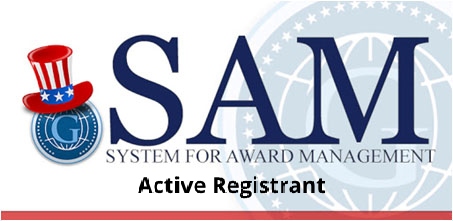Across the United States, managers are experiencing record levels of stress, burnout, and disengagement. Many managers find themselves stretched thin and exhausted after navigating unprecedented disruptions from the pandemic, constant changes in work models, and rising workplace demands. This growing issue isn’t just personal; it’s affecting organizations profoundly, leading to widespread declines in employee engagement, productivity, and overall workplace morale. When managers, the backbone of organizational effectiveness, lose motivation, the impact cascades throughout the organization, affecting everyone from frontline employees to senior executives. Addressing manager burnout and re-engaging leadership must become a top priority for companies hoping to thrive in today’s complex business landscape.
The Rising Engagement Crisis
Employee engagement—the feeling of being genuinely involved, enthusiastic, and committed to their work—has noticeably declined in recent years. Surveys consistently show that only about a third of U.S. workers are actively engaged, meaning the majority are indifferent, disengaged, or dissatisfied. The term “quiet quitting” has emerged to describe employees who meet minimal expectations without investing extra effort or emotional commitment.
Manager engagement specifically has fallen more sharply than among other employees. Recent surveys indicate that only around 27% of managers feel genuinely engaged at work, down significantly from previous years. Younger and female managers have experienced particularly pronounced drops in engagement, highlighting deeper structural and cultural workplace issues. Managers, already navigating considerable responsibilities, are increasingly disillusioned, with many contemplating leaving their roles entirely.
Understanding Manager Burnout
Burnout among managers goes beyond typical stress or fatigue. It’s characterized by persistent exhaustion, emotional detachment, cynicism toward work, and diminished performance. Managers are uniquely vulnerable due to their dual role: they must deliver results and simultaneously support and develop their teams. This dual responsibility becomes especially burdensome during periods of uncertainty and rapid change, precisely the conditions that have defined recent years.
The pandemic era exacerbated these stressors, intensifying managers’ workloads and emotional burdens. Many had to manage remote or hybrid teams without adequate training, adding complexity and frustration to their roles. The continuous pressure to maintain team productivity while offering emotional support during challenging times has left many managers mentally and emotionally drained.
Causes of Managerial Burnout
Several interconnected factors have contributed to the rise in manager burnout. Workload and role overload are prime culprits. As companies downsized or delayed rehiring after layoffs, remaining managers often absorbed additional responsibilities, significantly increasing their workloads without corresponding resources or support.
Furthermore, constant organizational changes, including frequent restructuring and shifting strategic priorities, have left managers perpetually adapting. This “change fatigue” has compounded the stress of leadership roles, as managers must continually realign themselves and their teams to evolving goals, often with unclear or insufficient guidance from senior leaders.
Remote and hybrid work arrangements, while offering flexibility, also pose unique challenges. Many managers received little or no training for effectively managing distributed teams, resulting in confusion, miscommunication, and reduced team cohesion. Managers were expected to quickly master new tools and methodologies with minimal preparation, further contributing to their burnout.
The Ripple Effect on Teams and Organizations
Manager burnout isn’t isolated; it directly affects employees and organizational outcomes. Disengaged and burned-out managers struggle to provide effective leadership, feedback, or motivation. Their reduced capacity impacts team morale, increases employee stress, and reduces productivity.
Teams led by disengaged managers typically show lower engagement, higher turnover, and reduced innovation. Employees look to their managers for clarity, support, and inspiration. When managers fail to meet these expectations due to burnout, teams lose direction and motivation, exacerbating organizational inefficiencies and negatively affecting customer experiences and business outcomes.
Additionally, burnout creates a retention crisis. Managers considering leaving their roles often influence others in their teams to do the same, leading to cascading turnover that is costly both financially and culturally. The loss of institutional knowledge and disruptions to team dynamics further compound these problems, creating a cycle of stress and turnover that can significantly hinder organizational performance and reputation.
Strategies to Address Manager Burnout
Effectively combating manager burnout requires comprehensive strategies. Organizations must recognize burnout as a critical issue and proactively implement systemic changes.
Prioritize Training and Development: Investing in comprehensive leadership development programs can significantly reduce burnout by equipping managers with the necessary skills. Targeted training in areas such as conflict resolution, remote team management, effective communication, and emotional intelligence can dramatically enhance managers’ capabilities and confidence.
Clarify and Streamline Managerial Roles: Organizations should regularly evaluate and clarify managerial responsibilities, reducing unnecessary administrative tasks. Clearly defined roles and responsibilities, coupled with effective delegation strategies, can alleviate workload pressures and allow managers to focus on impactful leadership activities like coaching and team development.
Supportive Workplace Culture: Fostering a culture where managers feel comfortable expressing vulnerability and seeking help is essential. Companies should encourage work-life balance through explicit policies, promoting regular breaks, flexible work hours, and respecting after-hours boundaries. Additionally, providing managers access to mental health resources, wellness programs, and peer support networks can significantly mitigate burnout risks.
Enhance Organizational Communication: Transparent and consistent communication from senior leadership reduces uncertainty and stress among managers. Clearly communicating organizational goals, priorities, and rationale behind strategic decisions helps managers align their efforts and reduce unnecessary ambiguity. Encouraging open feedback loops where managers can voice concerns directly to senior leaders also fosters trust and reduces managerial stress.
Recognize and Reward Effective Leadership: Regularly acknowledging and celebrating managers’ successes can reinforce their value within the organization. Recognition programs that highlight effective management practices promote morale and motivation. Rewarding managers for team engagement improvements, successful implementation of change initiatives, or exceptional leadership behaviors reinforces positive leadership practices and sets standards for others to emulate.
Harnessing Technology Thoughtfully: While technology has sometimes contributed to burnout by blurring work-life boundaries, it also offers powerful tools for relief. Leveraging technology to automate routine tasks, enhance communication efficiency, and facilitate better time management can significantly reduce managerial workloads. Thoughtful implementation of technology, combined with clear usage guidelines, can help managers maintain work-life balance and reduce digital stress.
Leadership Styles That Mitigate Burnout
Leadership style significantly impacts managerial stress and burnout. Transformational and servant leadership styles have proven particularly effective in creating healthier, more sustainable workplaces.
Transformational Leadership: Transformational leaders inspire their teams by articulating clear, compelling visions and empowering employees. By encouraging innovation, fostering autonomy, and providing meaningful feedback, transformational leaders reduce the stress and ambiguity that often contribute to burnout. This leadership approach not only boosts team morale and engagement but also enhances managers’ sense of purpose and satisfaction.
Servant Leadership: Servant leaders prioritize the well-being and growth of their teams, fostering environments characterized by empathy, trust, and mutual support. By placing employees’ needs first, servant leaders cultivate workplaces where stress and burnout are actively mitigated. This style encourages open communication and collaboration, reducing emotional burdens on managers by distributing leadership responsibilities and fostering collective resilience.
Conclusion
Manager burnout and declining engagement represent critical challenges that threaten organizational health and sustainability. The past several years have placed unprecedented stress on managers, pushing many toward exhaustion and disengagement. To reverse these trends, organizations must proactively address underlying causes through comprehensive strategies focused on managerial support, clear role definitions, effective training, thoughtful use of technology, and cultivating healthy leadership styles.
By investing in managerial well-being and development, organizations can foster more resilient, engaged leaders who drive healthier workplace cultures. Addressing manager burnout isn’t merely a compassionate choice; it’s a strategic imperative essential to organizational success, employee retention, and long-term business performance. Through intentional effort and systemic changes, organizations can rebuild managerial engagement, positively transforming their entire workplace dynamic.
Go out and Lead!



